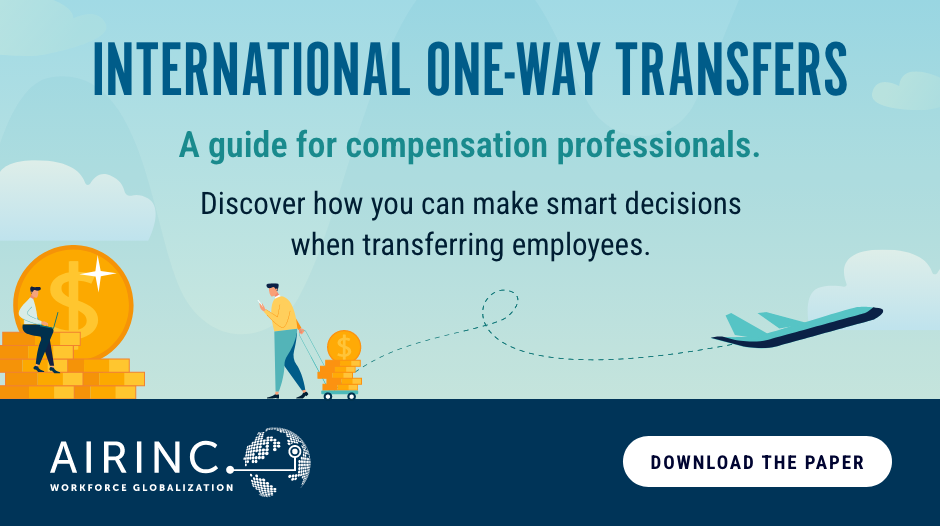As a compensation or mobility professional you may be asked, is the salary I am offering to an international transferee adequate? The answer may be no even if you are using carefully benchmarked salary structures.
Here is a guide and case study to showcase how you can leverage data to determine if a salary is adequate or not.
Steps 1 and 2: Establish and Compare Salaries
An employee moving from London to NY currently earns £120,000 (or $148,000 converted at a rate of £1 = $1.23). This is a completely lateral move. For the same position in New York, the job pays $215,000. Is that enough? The New York salary seems like a lot more—but what about income tax and cost differences?
Source: AIRINC Global Salary Comparison, December 2023
Income Taxes:
These are lower in New York City when considering Federal, State and Local Taxes. In fact, to net the same in New York City, the employee would only have to earn a gross salary of $126,000 vs. the current $148,000. The employee is already ahead of the game!
Cost of Living:
New York City is more expensive than Outer London. In fact, housing and goods and services are higher. Factoring in both income tax and cost differences, the employee would need to earn a gross salary of $144,436 to avoid losing any spending power. This is still less than what the employee currently earns in the United Kingdom at $148,000. But the position in New York City pays $215,000! In this case, there should be no challenge moving the employee from the United Kingdom to New York City. They will actually enjoy an increase in spending power, which means that the local salary is more than adequate.
But can you imagine if the tides were turned, and you were looking to move the employee from New York City to Outer London?
The reverse would be true: the employee would be losing out by quite a bit as the U.K. salary is lower, British income taxes are higher, and, while the living costs are lower in the United Kingdom, they are not low enough to make up for the relatively lower U.K. salary. Best practice companies would not deem this “adequate”, and many would seek to proactively mitigate the loss with a transition payment. The transition payment may be equal to the difference in the offered and origin salaries or a portion thereof, and it may consider the income tax and cost differences in the calculation.
The key here is to be proactive. Without a proactive comprehensive evaluation of the salaries, the job offer process will likely experience problems. The employee will likely question the adequacy of the offer and request more information, causing the back and forth that should be avoided. This can delay the transfer—or worse, cause the employee to become disengaged or to resign.






%20(26)%20(1).jpg)
%20(25)%20(1).jpg)
%20(84).png)

